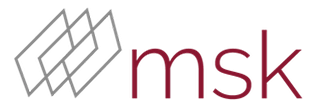Earlier this year, three artists filed a putative class action, on behalf of themselves and other artists, alleging that Stability AI Ltd., Stability AI, Inc., Midjourney, Inc., and DeviantArt, Inc. had infringed copyrights in their artwork via Defendants’ generative artificial intelligence software. Plaintiffs challenged Stability AI’s creation of the Stable Diffusion software, alleging that Stable Diffusion was “trained” on their works to produce output images in Plaintiffs’ “style.” Plaintiffs also alleged that Midjourney, and DeviantArt were infringers because they use Stable Diffusion in their products.
In an order issued on October 30, 2023, Judge William Orrick of the U.S. District Court for the Northern District of California largely granted Defendants’ motion to dismiss under Federal Rule of Civil Procedure 12(b)(6) with leave to amend, and denied it only as to the direct copyright infringement claim that Plaintiff Anderson asserted against Stability AI.
First, the Court dismissed the claims of two Plaintiffs who had failed to show they had registered their works. Although this ruling was correct, interestingly, the order dismissed these claims “with prejudice.” It is unclear from Judge Orrick’s ruling whether he intended to preclude further lawsuits or rather merely held that these two Plaintiffs could not amend in the action before him.
Second, the Court denied Defendants’ motion to dismiss the claims for direct copyright infringement as they pertained to Stability AI’s creation and use of “training images” scraped from the Internet into the LAION datasets, which were then used to train Stable Diffusion. However, the direct infringement claims against DeviantArt and Midjourney were dismissed with leave to amend. Both DeviantArt and Midjourney developed and distributed products that rely on Stable Diffusion to produce images in response to text prompts, and allegedly “embedded and stored compressed copies of the [t]raining [i]mages” contained within Stable Diffusion. DeviantArt, Midjourney (and Stability AI) argued that those assertions are implausible “given plaintiffs’ allegation that the training dataset was comprised of five billion images; five billion images could not possibly be compressed into an active program[,]” and Plaintiffs’ admission that “the diffusion process involves not copying of images, but instead the application of mathematical equations and algorithms to capture concepts from the Training Images.”









